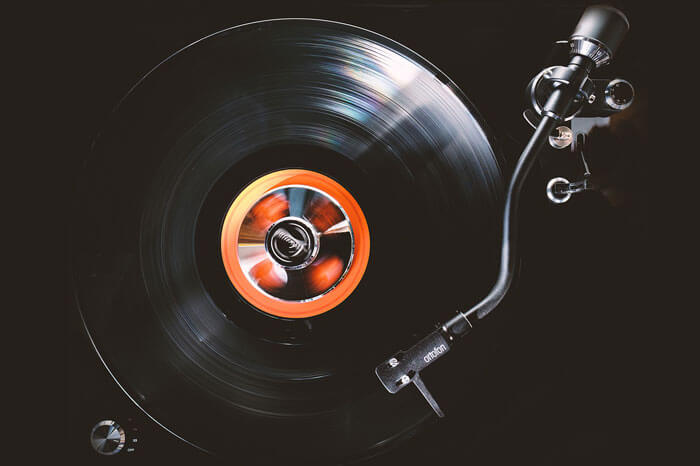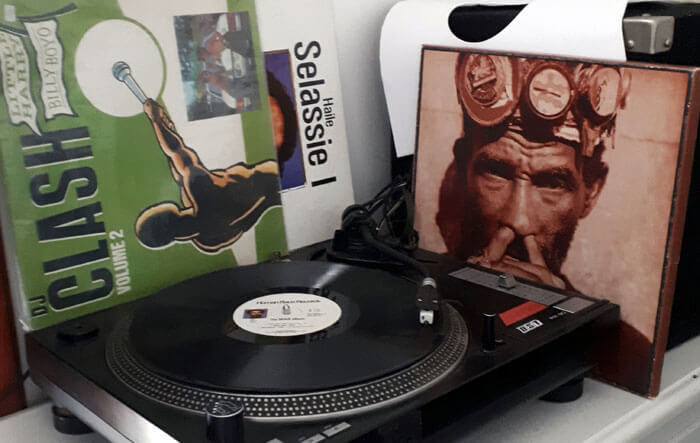1. The warm and authentic sound
CDs, MP3s and music that is streamed all sound clean and pristine, manufactured. There is nothing digital about how vinyl records are made, and that’s why their sound offers an experience that is close to listening live music. The crackles and pops and variations in vinyl make it sound more real and authentic, where slight variances make you notice different layers of the song every time.
2. The experience of focusing on music
Vinyl lovers put on a record when they really want to listen to the music as their main activity. It is an experience and a whole process that involves choosing the record, putting it on the turntable, turning it at some point, giving your full attention to good music.
3. Collecting vinyls improves your taste in music
People who collect or play vinyl records have a particular appreciation for evergreen music and the authenticity of the author. They tend to be quite picky about what they listen to and rarely listen to mass product or superficial kind-of-music. They prefer artists and bands that have artistic honesty and compose their own songs and play their own instruments. Artists who meet those criteria are the ones you can find in a record shop.
4. The experience of buying and owning vinyl records
Buying a vinyl is a thrilling experience, the type of experience that got lost in iTunes and Spotify generation. In a record shop you can spend hours searching for music, and when in doubt you might end up taking to people, asking for their opinions and suggestions. It’s more of a social experience than any app or streaming service could ever be, as vinyl has that magical power of connecting people with similar interests. Collectors have contacts with people around the world to maintain their high-quality collection.
5. Cover art
LP sleeves are big enough that you can really appreciate the cover artwork. Invented in 1938 by graphic designer Alex Steinweiss, album cover art quickly became one of the most important design disciplines in the world. In the following years, cover design became a vital part of music records, not to mention a strong cultural influence. For example, look at the creative cover art by Wilfred Limonious. Finally, covers look great on your wall for decoration and vinyls look cool on your shelf!

6. They last long, and you could make money out of them
Vinyl records from 40 years ago still sound as good as back then. Most probably, used CDs from 10 years ago don’t sound as good, or they tend to scratch more easily. Also, when you buy an MP3 on iTunes, you don’t really own anything; but when you buy a vinyl you are making an investment that you can later sell, or pass down to your children. There’s a big community of people buying, collecting and reselling vinyl, because it always keeps its purchase value, and even increases in value.
7. Loudness and time “limits”
Vinyl sound can never be as loud as digital one, but this is not necessarily a bad thing as some think. Digital music engineering often goes over the top with the volume, which can lead to fatiguing or to hyper-compressed songs that lack the textures that give vinyl its depth and vitality. Another factor that some criticize, is that vinyl records have a limited number of songs (usually four or five songs on each side). But it’s actually a positive thing: it’s the perfect amount in one sitting for any artist. CD’s increased capacity means that inferior songs will also find their place on the album, decreasing the overall quality of an artist’s release as a result.
Vinyl is an old technology and has remained relatively unchanged over the past forty years. But that’s because it’s the closest to the perfect device for listening to music!
SOURCES
https://medium.com/@dandesim/5-reasons-why-i-listen-to-vinyl-records-adde43021347
http://digitalvsvinyl.co.za/
https://vox.rocks/blog/vinyl-is-better
https://www.awwwards.com/the-forgotten-beauty-of-vinyl-album-cover-art.html


more and more people buying vinyl records in search of the perfect sound 😀